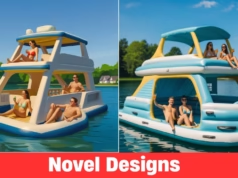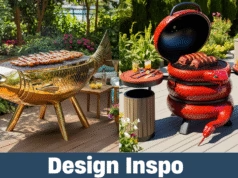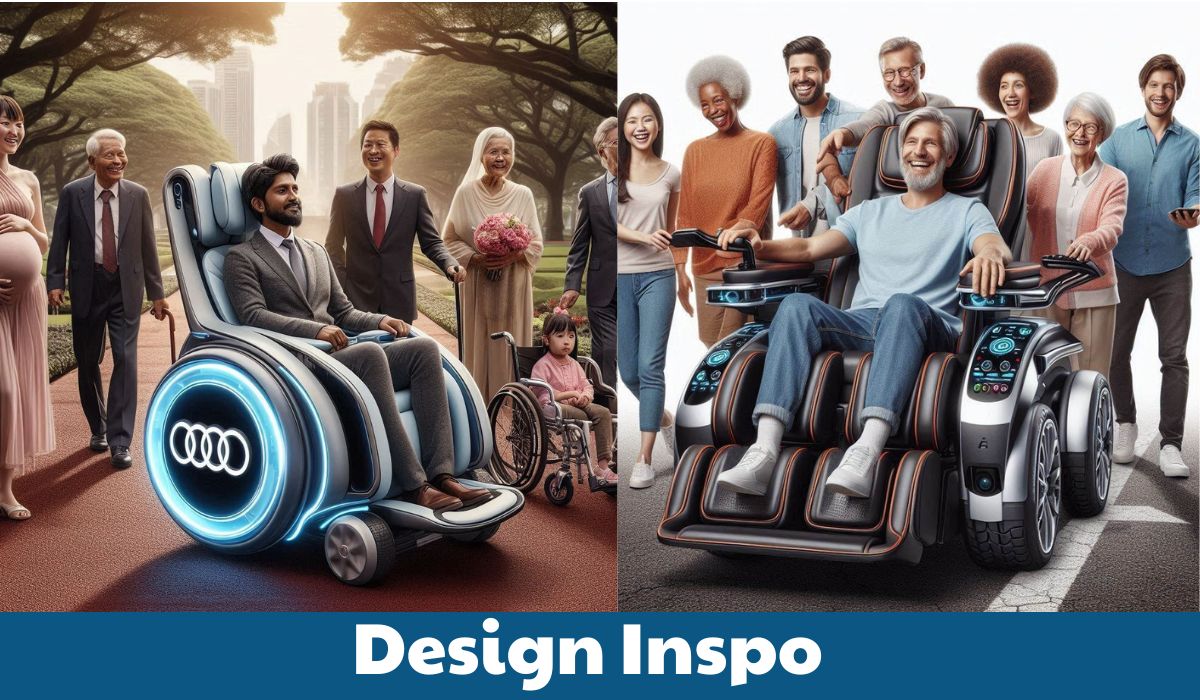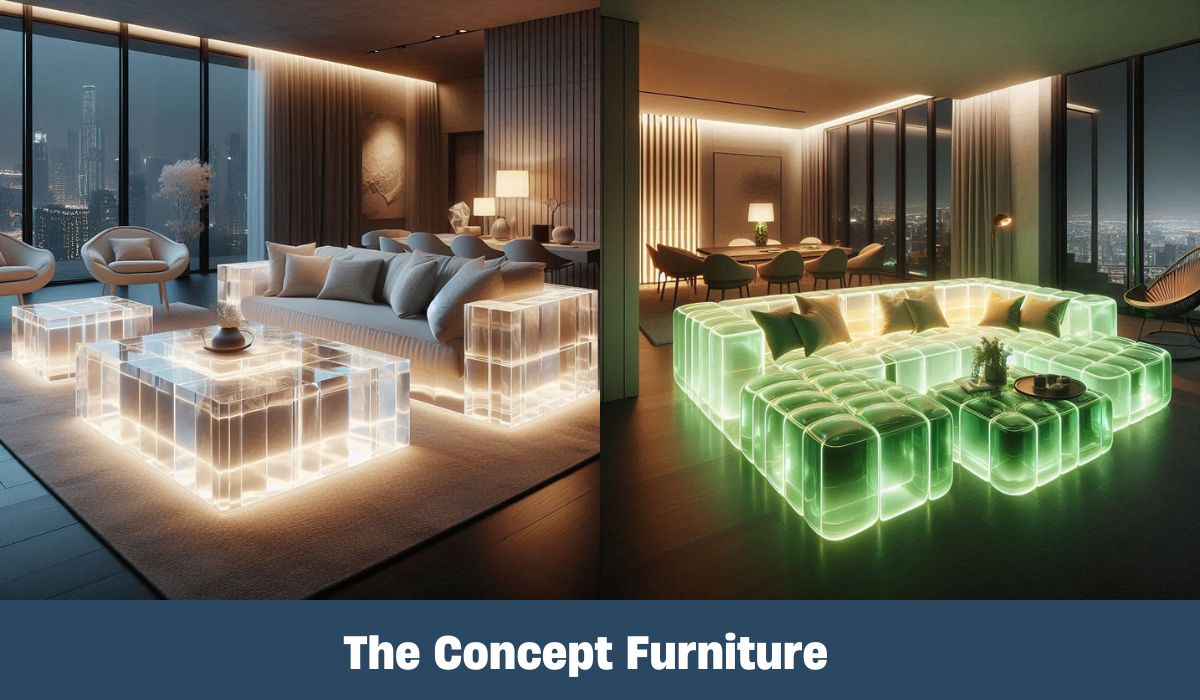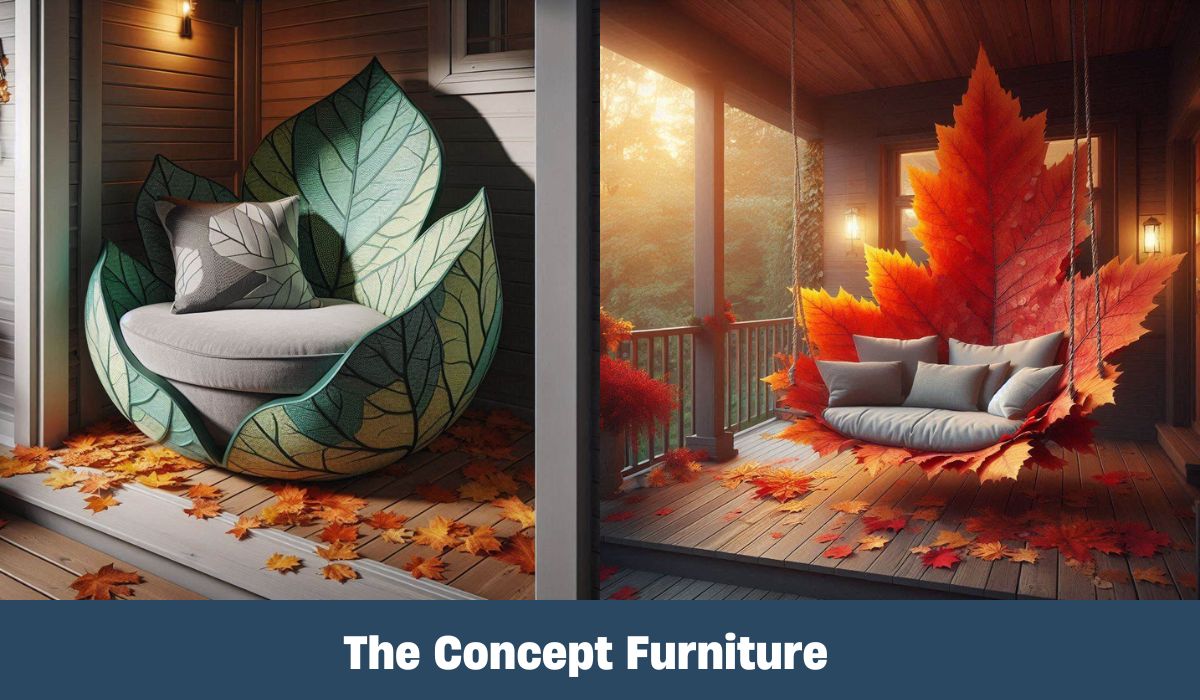In an age where conventional travel often meets with overcrowded hotels and standard RVs, house shaped campers emerge as a breath of fresh air. These unique living spaces offer a delightful blend of comfort, style, and functionality, allowing outdoor enthusiasts to experience nature in a way that feels like home. With creative designs inspired by tiny homes, these campers are not just about getting from point A to B; they encapsulate the joy of travel, adventure, and the beauty of the great outdoors. As we delve into the world of house shaped campers, you will discover their many features, benefits, and the reasons why they are becoming increasingly popular among adventurers and families alike.
Introduction to House Shaped Campers
House shaped campers serve as a testament to innovative design and practical living. They represent a growing trend in the camping world that prioritizes comfort and aesthetics without sacrificing mobility.
As people increasingly seek alternatives to traditional vacationing, house shaped campers provide a unique solution that combines the essence of a home with the freedom of being on the road. Here, we’ll explore what house shaped campers are, how they’ve gained popularity, and the factors contributing to their rise as a preferred choice for outdoor enthusiasts.
What Are House Shaped Campers?
At their core, house shaped campers blend the ideals of mobile living with the conveniences of modern architecture. Unlike traditional RVs or trailers that often prioritize functionality over style, these campers are designed to resemble cozy homes, complete with charming details that make them feel inviting.
Typically, house shaped campers come equipped with essential amenities such as kitchenettes, bathrooms, sleeping areas, and sometimes even spacious dining areas. While they maintain the compactness necessary for towing, they also incorporate clever design features that maximize space and enhance livability. The exterior often reflects architectural styles found in contemporary homes, including pitched roofs, front porches, and large windows that connect occupants with the surrounding landscape.
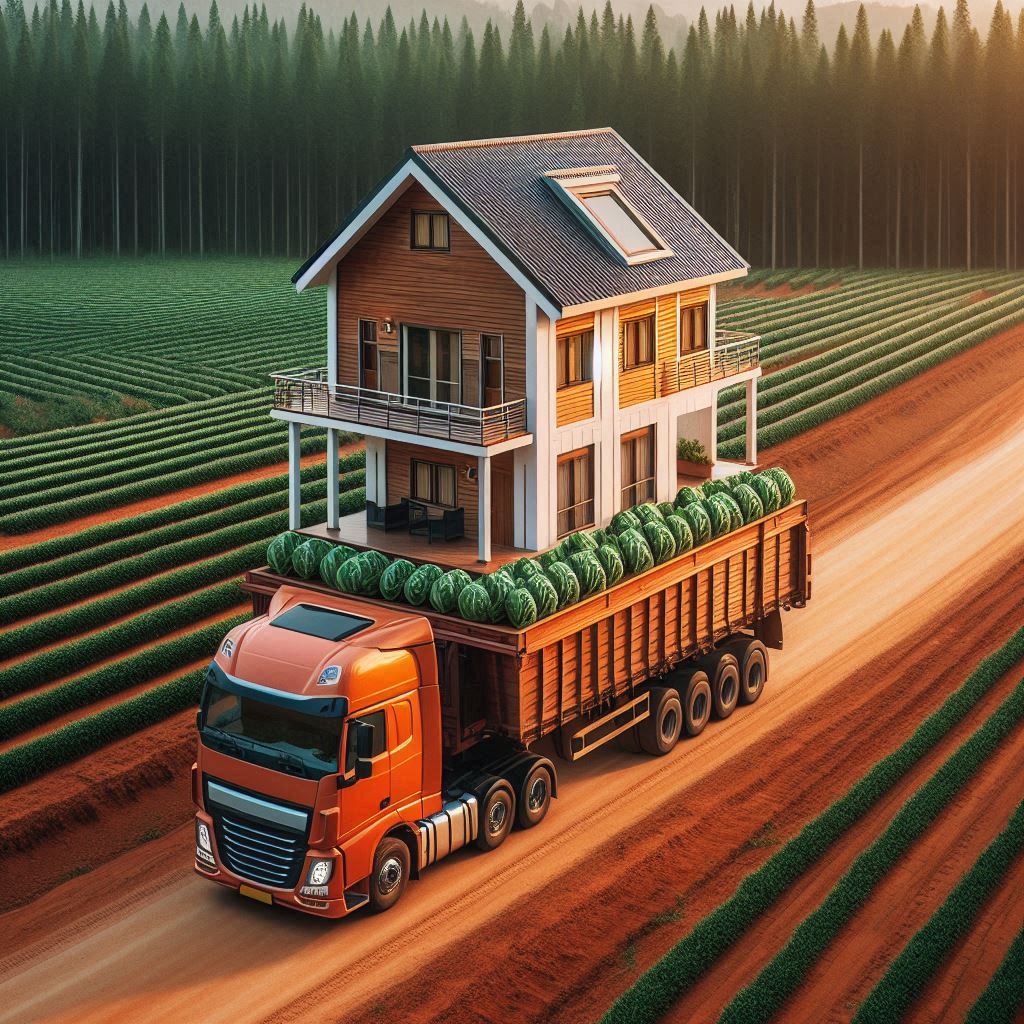
The definition of house shaped campers can vary; they may be towable trailers, custom-built tiny houses on wheels, or modular units designed for easy expansion. Regardless of the specific type, the common thread is a commitment to providing a more homely experience while camping.
The Growing Popularity of House Shaped Campers
The recent surge in interest surrounding house shaped campers can be attributed to several factors. First and foremost, there’s been a notable shift in societal attitudes toward travel and lifestyle choices. The pandemic prompted many individuals and families to rethink vacationing, leading them to embrace more isolated and nature-centric experiences.
Furthermore, the tiny house movement has gained traction, inspiring people to downsize their living spaces and simplify their lifestyles. This trend seamlessly translates into the realm of camping, where house shaped campers embody the spirit of minimalism without compromising comfort.
The desire for flexibility in travel also plays a crucial role in the popularity of these campers. With house shaped campers, travelers can have the luxury of choosing their destinations without being tied to specific accommodations. This freedom allows for spontaneous adventures and exploration of lesser-known locales, enhancing the overall experience of outdoor living.
Benefits of House Shaped Campers
House shaped campers offer a multitude of advantages that cater to diverse lifestyles and preferences. They are not only aesthetically pleasing but also functional and versatile, making them a top choice for those looking to escape the ordinary.

As we journey through the various benefits of house shaped campers, we will uncover how they elevate the camping experience, providing unmatched comfort, unique designs, and the adaptability to suit various outdoor activities.
Enhanced Comfort and Space
One of the defining characteristics of house shaped campers is their ability to provide enhanced comfort when compared to traditional campers.
With thoughtful layouts that often feature designated zones for cooking, dining, and relaxing, these campers feel more like home than mere temporary shelters. Many house shaped campers offer ample headroom, wider walkways, and larger living areas, creating an environment that fosters relaxation and enjoyment.
The inclusion of comfortable furnishings, such as plush seating and cozy beds, encourages occupants to unwind after a long day of exploring the great outdoors. Even the smallest design elements—like soft lighting, well-placed storage solutions, and decorative touches—contribute to making the space feel warm and welcoming.
Additionally, having separate spaces for different activities is especially beneficial for families or groups traveling together. Parents can prepare meals or read while children play or socialize in another area. This separation ensures that everyone enjoys personal space while still being able to connect easily when desired.
Unique Design and Aesthetic Appeal
One cannot overlook the aesthetic appeal that house shaped campers bring to the table. Their design often incorporates creative elements that set them apart from standard RVs or trailers.
Many of these campers boast exteriors that reflect the charm of traditional houses, featuring vibrant colors, stylish roofs, and inviting porches. Such designs create a sense of character that resonates with outdoor enthusiasts who appreciate artistry and craftsmanship.
The interiors are equally stunning, often showcasing modern finishes and artistic decor that elevates the camping experience. From custom cabinetry to chic upholstery, each camper tells a unique story through its design choices.

For individuals who value aesthetic appeal, house shaped campers provide an opportunity to own a piece of art that doubles as a functional living space. This draw towards beautiful design not only enhances the camping experience but also makes these campers appealing for social media sharing, allowing owners to showcase their adventures in style.
Versatility for Various Outdoor Activities
House shaped campers are incredibly versatile, catering to a wide range of outdoor pursuits. Whether it’s hiking, fishing, skiing, or simply enjoying nature, these campers adapt easily to fit the needs of various activities.
The robust interior design choices allow for packing and storing equipment efficiently while ensuring a comfortable place to return to after a day spent outdoors. For example, dedicated storage spaces for bikes, kayaks, or fishing gear make it easy for adventurers to embark on their excursions without worrying about clutter.
Moreover, some models are specifically designed to accommodate off-grid living, incorporating solar panels, water tanks, and composting toilets, enabling users to enjoy remote camping without sacrificing modern comforts. This eco-friendly aspect appeals to growing numbers of environmentally conscious campers who wish to minimize their impact on nature.
House shaped campers break the mold of traditional camping by allowing users to blend outdoor adventure with the comforts of home, ensuring that they have everything they need for unforgettable experiences in nature.
Different Types of House Shaped Campers
House shaped campers come in a variety of styles and forms, each offering unique features that cater to different preferences and needs. Understanding the various options available is essential when considering which type to invest in.
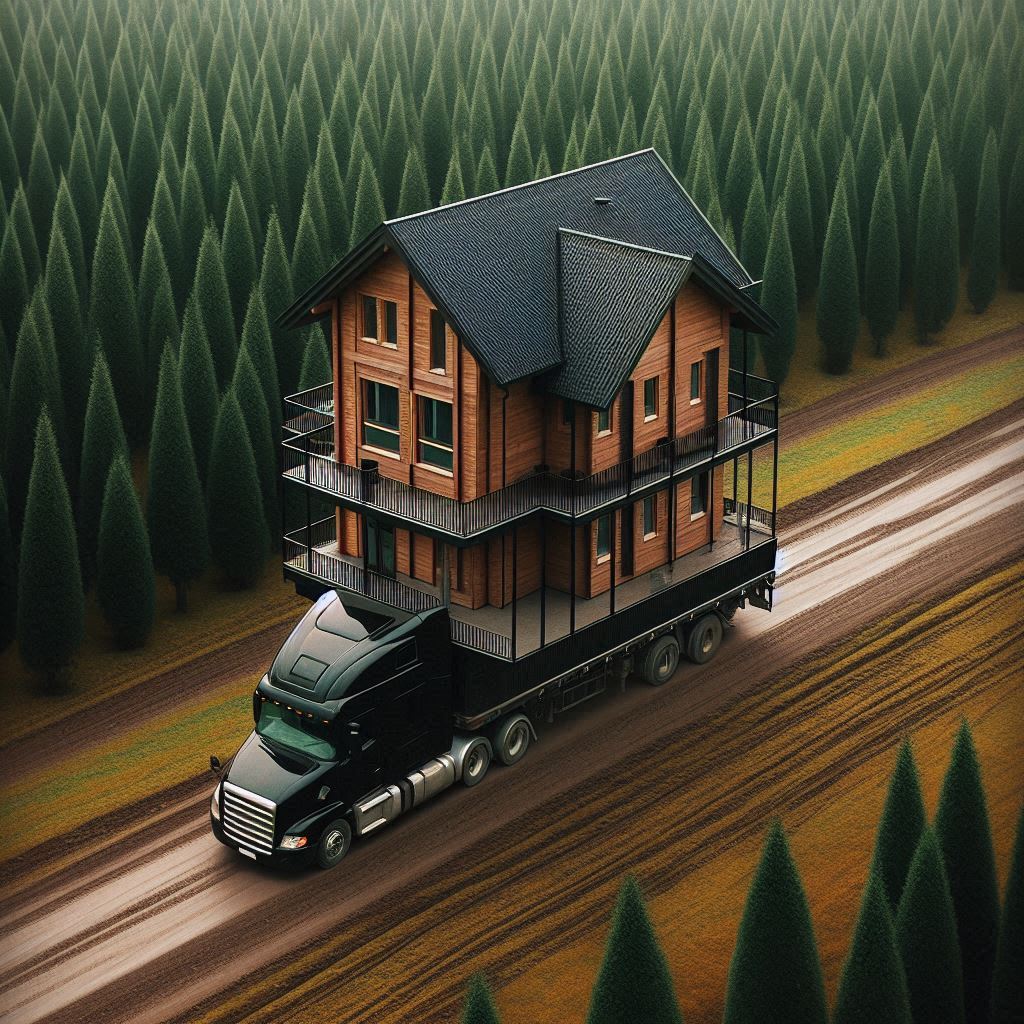
Let’s explore the different types of house shaped campers, highlighting their individual characteristics and the aspects that make them suitable for various lifestyles and camping scenarios.
Tiny House Campers
Tiny house campers represent the ultimate fusion of portability and compact living. These campers are designed to maximize space utilization, providing all the essential amenities one would expect in a residential setting.
While traditional tiny homes are often stationary, tiny house campers are built on trailers, allowing for easy transportation. Their designs typically include a lofted sleeping area, a fully functional kitchen, and a small bathroom, making them ideal for couples or solo travelers who appreciate minimalist living.
One of the key attractions of tiny house campers is their strong focus on sustainability and energy efficiency. Many models incorporate features such as energy-efficient appliances, solar power systems, and eco-friendly materials, appealing to those who prefer green living.
Moreover, the tiny house movement promotes a lifestyle centered around simplicity and intentionality, allowing travelers to create lasting memories without the distractions of excess belongings.
Modular and Expandable Campers
Modular and expandable campers provide a flexible approach to camping, allowing users to customize their living space according to their current needs.
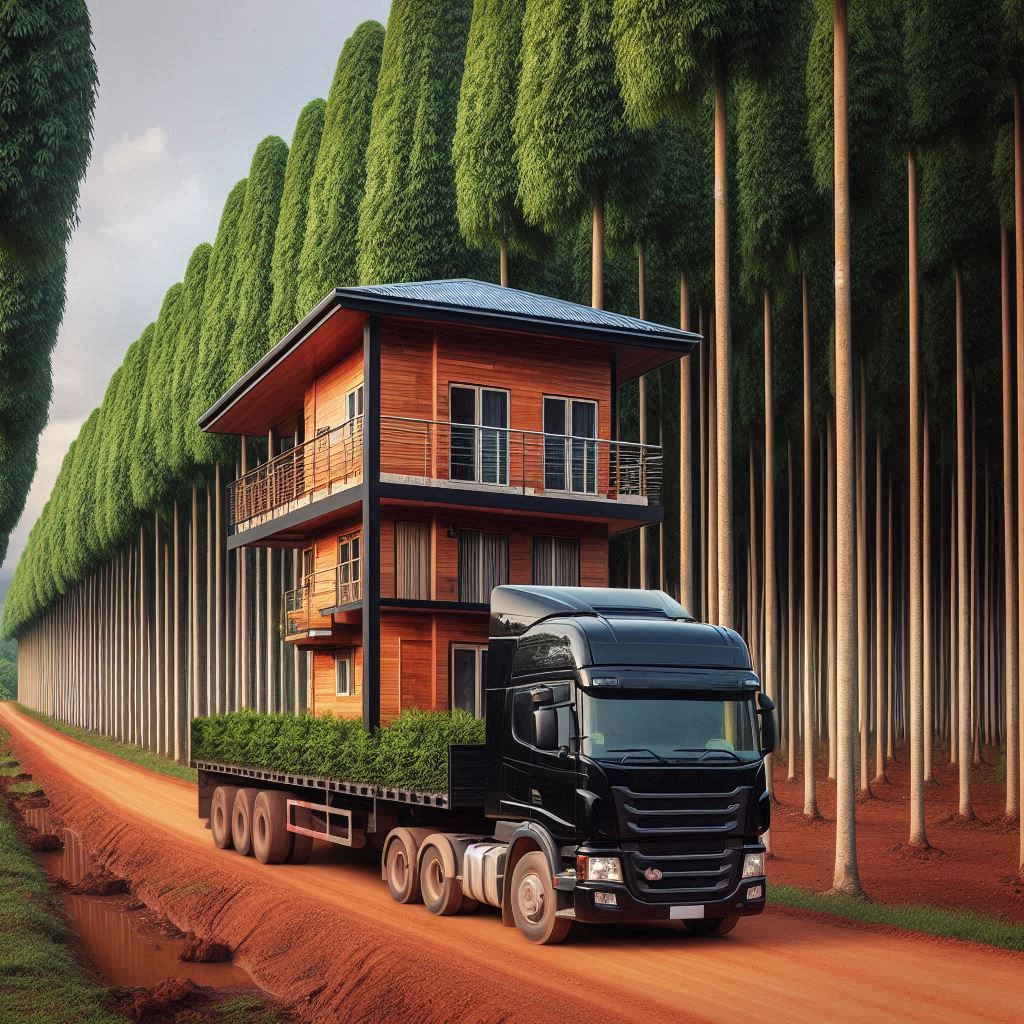
These campers often consist of multiple sections that can be expanded or retracted based on the number of occupants or specific activities planned. For instance, a couple on a weekend getaway might opt for a compact setup, while families taking a longer trip can expand their space for added comfort.
The versatility of modular campers extends beyond size; they can also feature interchangeable components, enabling users to swap out certain sections for alternative purposes, such as adding extra sleeping quarters or workspaces.
This adaptability is particularly advantageous for those who frequently take different groups on trips, as they can modify their living arrangements to suit various circumstances without investing in multiple campers.
Eco-Friendly House Shaped Campers
As environmental awareness grows, so does the demand for eco-friendly camping solutions. House shaped campers designed with sustainable practices in mind are gaining popularity among nature lovers who prioritize reducing their ecological footprint.
Eco-friendly campers usually incorporate renewable energy sources, such as solar panels, to power appliances and lighting. Additionally, many are built using sustainable or recycled materials, emphasizing a commitment to responsible consumption.

Water conservation features, such as rainwater collection systems, composting toilets, and energy-efficient water heaters, are common within eco-friendly designs. These thoughtful additions enable users to enjoy nature while minimizing their impact on the environment.
Ultimately, eco-friendly house shaped campers appeal to those who wish to immerse themselves in the beauty of the outdoors while preserving it for future generations. By choosing to invest in sustainable camping solutions, adventurers contribute to a greener, healthier planet.
Choosing the Right House Shaped Camper
Selecting the right house shaped camper can be a daunting task, given the plethora of options available on the market. It’s essential to assess your specific needs and preferences before making a decision.

Understanding key features, evaluating your lifestyle requirements, and considering budget constraints will play a significant role in determining which camper best suits your camping ambitions.
Key Features to Consider
When embarking on the journey to find the perfect house shaped camper, it’s vital to identify the features that are most important to you.
Some campers prioritize lightweight construction for easier towing, while others may focus on maximizing living space with smart design elements. Look for features such as:
- Floor Plan: Evaluate the layout carefully. Some designs may offer separate sleeping areas, while others provide open-concept living spaces.
- Storage Options: Efficient storage solutions are crucial for keeping your camping gear organized. Check for built-in cabinets, under-bed storage, and other creative compartments.
- Amenities: Depending on your preferences, you may want a fully equipped kitchen, bathroom facilities, or entertainment options. Consider what amenities are essential for making your camping experience comfortable. By prioritizing these features, you can narrow down your options and find a camper that aligns with your lifestyle needs.
Assessing Your Needs and Lifestyle
To determine which house shaped camper is right for you, reflect on your camping habits and lifestyle choices.

Consider the following questions:
- How often do you plan to use the camper? If you’re a frequent traveler, durability and ease of maintenance may be paramount.
- Who will be joining you? Families with children might require more space and amenities versus solo travelers or couples seeking simpler setups.
- What types of locations do you prefer? Off-grid campers may be ideal for those who love remote camping, while campers designed for RV parks can accommodate full hookups.
By assessing your needs, you can choose a camper that fits seamlessly into your lifestyle and enhances your outdoor adventures.
Budget Considerations
Budget is undoubtedly a critical factor when choosing a house shaped camper. Prices can vary significantly depending on the brand, features, and level of customization.
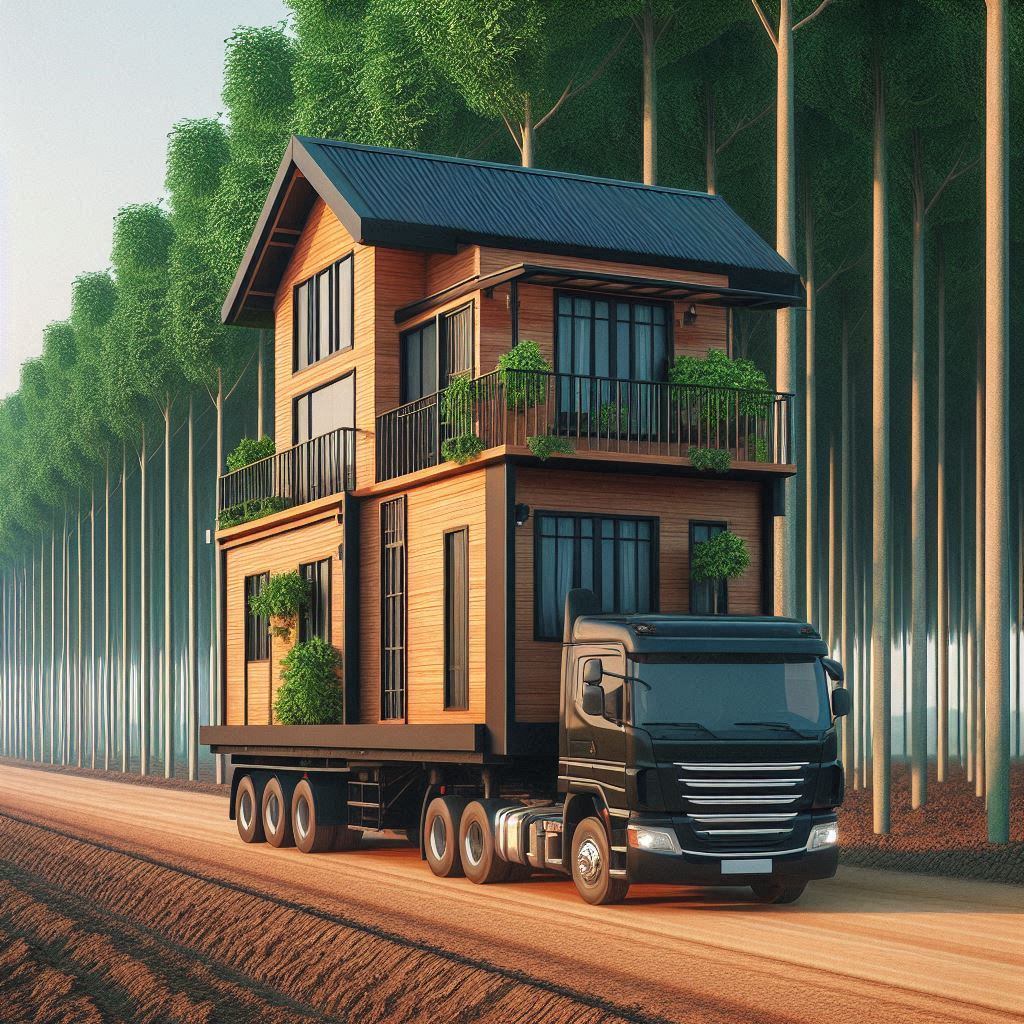
While it’s tempting to go for higher-end models filled with luxurious extras, it’s important to strike a balance between affordability and quality. Determine your budget beforehand and stick to it.
Keep in mind potential additional costs, including insurance, maintenance, and the possibility of upgrades or modifications down the line. Investing in a camper should align with your financial goals, ensuring your purchase complements your lifestyle rather than complicates it.
Tips for Customizing Your House Shaped Camper
Once you’ve selected the perfect house shaped camper, the fun doesn’t stop there! Many owners choose to personalize their campers to reflect their tastes and enhance the overall camping experience.
Customizing your camper can be a rewarding process, as it allows you to create a space that feels uniquely yours. Here are some tips to consider when customizing your house shaped camper.
Interior Design Ideas
The interior of your house shaped camper sets the tone for your entire camping experience. Consider the following interior design ideas to help craft a space that embodies comfort and style:
- Color Scheme: Choose a cohesive color palette that reflects your personality and creates a calming atmosphere. Lighter colors can make small spaces feel more open, while bolder hues can add character.
- Furnishings: Selecting furniture that maximizes space is key. Opt for multi-functional pieces, such as sofas that convert into beds or dining tables that fold away when not in use.
- Decorative Accents: Personalize your space with decorative touches, such as wall art, cushions, and rugs. Don’t forget to include items that remind you of home, making your camper feel comfortable and welcoming.
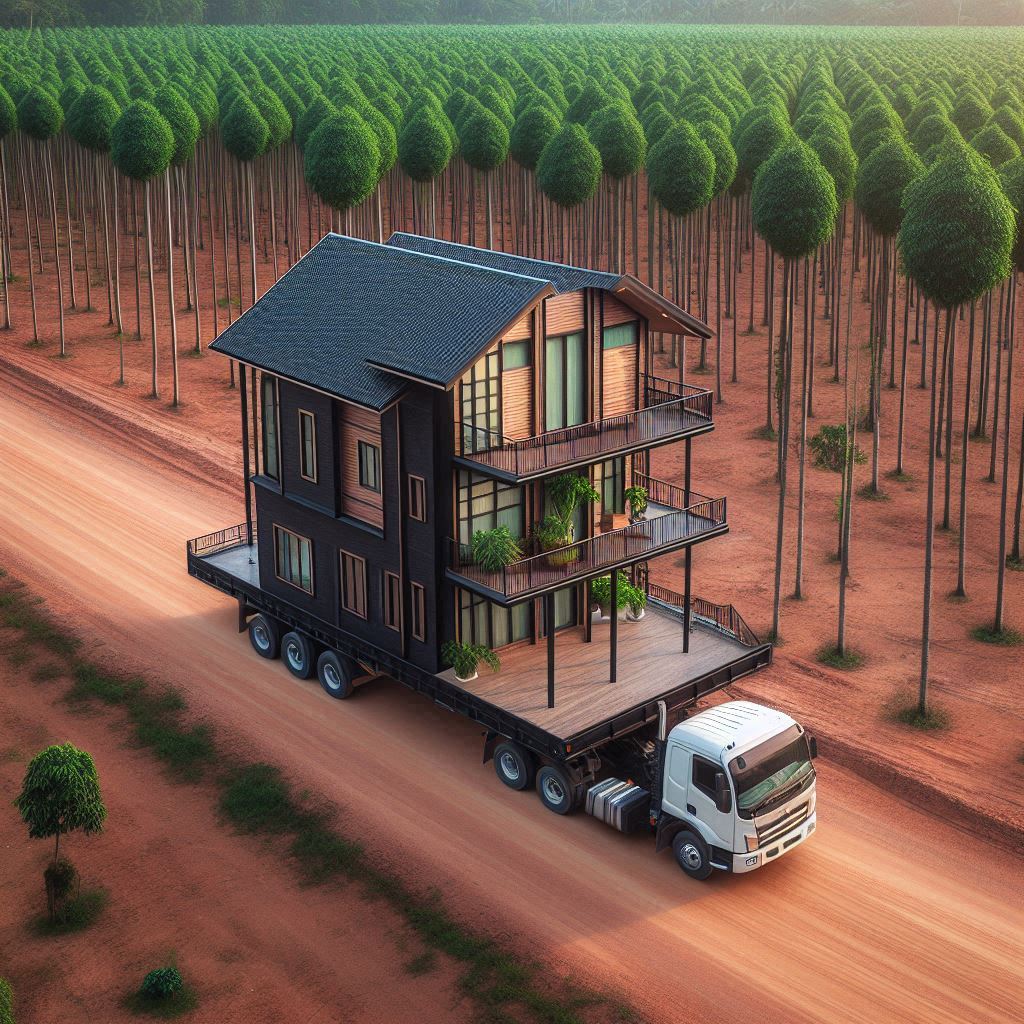
Creating a well-designed interior enhances the camping experience, ensuring you can unwind and recharge after adventurous days.
Exterior Customization Options
Expressing your style on the outside of your camper is just as important as the interior. Explore various exterior customization options to make your camper stand out:
- Exterior Colors and Finishes: Consider repainting your camper in a color that resonates with you. You might also experiment with unique finishes, such as matte or metallic, to add flair.
- Add-ons and Accessories: Install awnings, outdoor lighting, or bike racks to improve functionality and aesthetic appeal. Outdoor furniture, such as folding chairs and tables, can create a cozy outdoor oasis.
- Landscaping and Surroundings: When parked at campsites, enhance your surroundings with potted plants or outdoor decorations. Small touches can create a welcoming and visually pleasing environment.
Making both interior and exterior changes allows you to put your stamp on your house shaped camper while maximizing its functionality and charm.
Functional Additions and Upgrades
Beyond aesthetics, consider practical upgrades that can significantly enhance your camper’s performance and usability.
- Solar Power Systems: Installing solar panels can provide a sustainable energy source, allowing for off-grid camping without giving up modern conveniences.
- Smart Technology: Integrating smart technology enables better control of climate, security, and entertainment systems, bringing convenience to your camping experience.
- Upgraded Appliances: Consider replacing older appliances with energy-efficient ones that save space, such as compact refrigerators or stovetops. These upgrades can improve functionality while boosting energy efficiency.
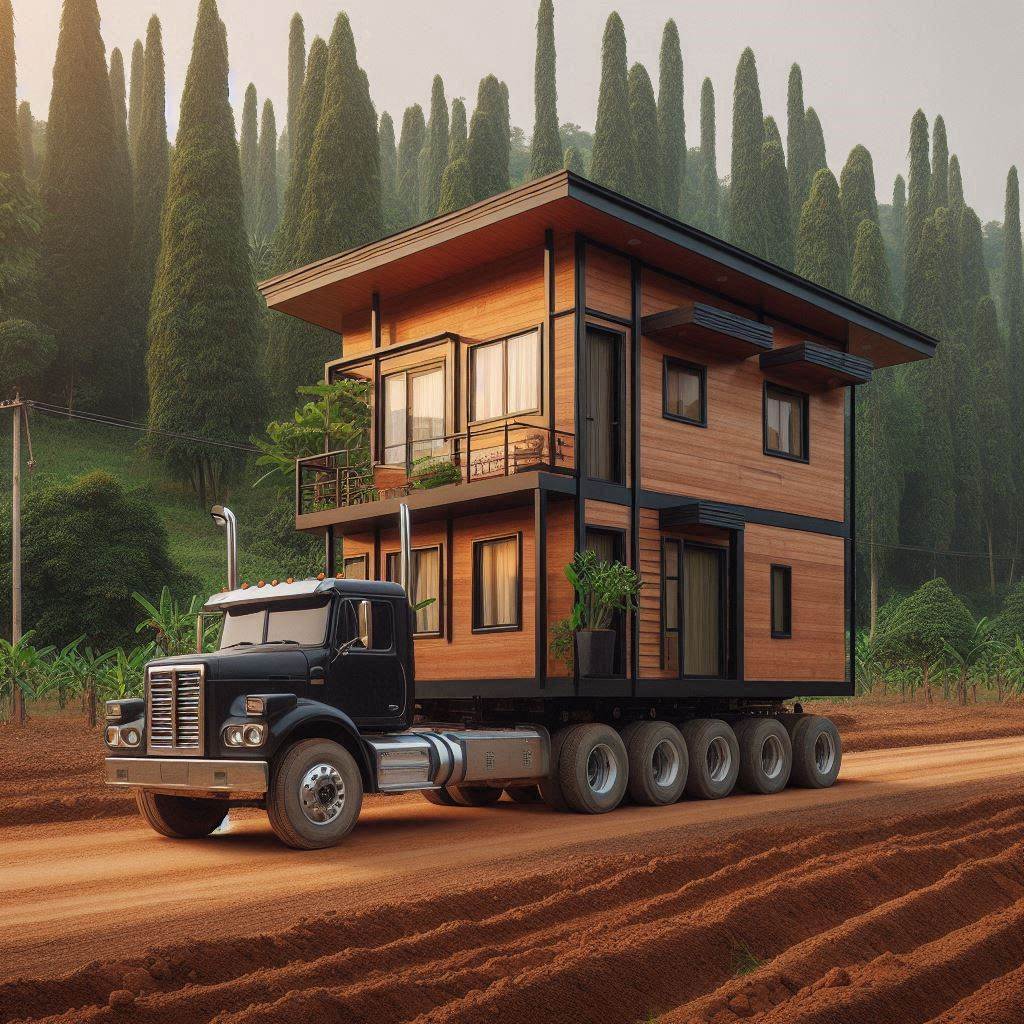
Investing in thoughtful additions and upgrades transforms your house shaped camper into a tailored retreat that caters to your specific needs.
Maintenance and Care for House Shaped Campers
Taking proper care of your house shaped camper is essential to ensure its longevity and performance. Just like any other vehicle or home, regular maintenance helps prevent issues and keeps the camper in excellent condition.
Let’s dive into some key maintenance practices and care tips to keep your camper in peak shape for years to come.
Regular Maintenance Tips
Establishing a maintenance routine is crucial for ensuring your camper remains safe and functional. Start by performing regular checks on critical components such as:
- Tires: Inspect tire pressure regularly and check tread wear. Rotating tires and maintaining proper inflation contribute to safer driving and improved fuel efficiency.
- Plumbing and Electrical Systems: Periodically check for leaks in plumbing and ensure electrical systems function correctly. Clean and inspect the water filtration system before hitting the road.
- Roof and Seals: Inspect the roof and seals for wear and tear. Regularly clean and maintain these areas to prevent leaks or moisture damage.
A consistent maintenance routine will help catch potential problems early, saving you time and money in repairs while enhancing your overall camping experience.
Winterizing Your Camper
If you live in a region where winter weather is prevalent, it’s essential to winterize your house shaped camper properly. Taking the time to prepare your camper for colder months will extend its lifespan and protect it from damage.
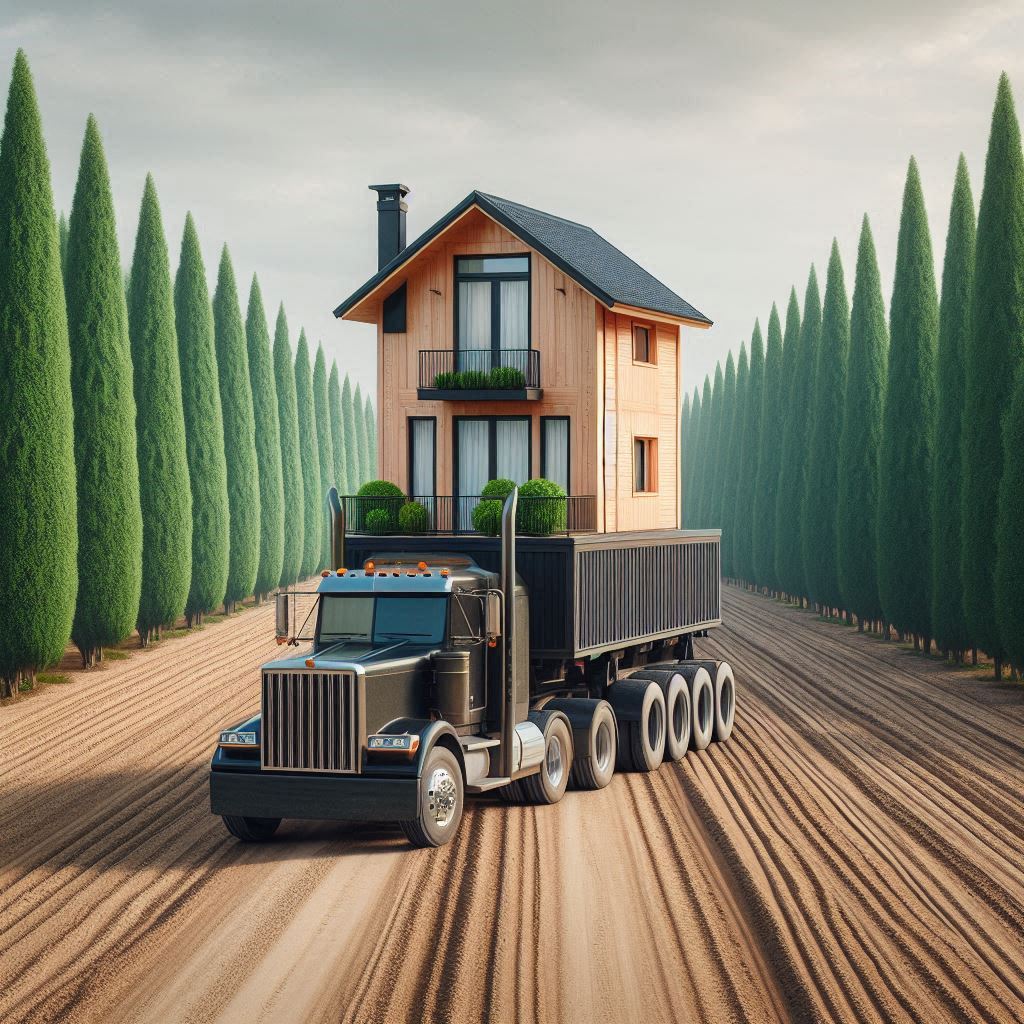
Start by draining all water systems to prevent freezing and cracking. Use antifreeze for plumbing lines and tanks, and remember to disconnect batteries to avoid drainage.
Additionally, cleaning and sealing any exterior openings will help prevent pests from entering during the off-season. Covering the camper with protective tarps or specialized covers can shield it from harsh weather conditions.
Winterizing effectively preserves your investment and ensures that your camper is ready to roll come springtime.
Common Repairs and How to Handle Them
Even with diligent maintenance, repairs may become necessary over time. Familiarizing yourself with common issues can equip you to handle them effectively.
- Leaks: Roof leaks or window drafts often require resealing with appropriate sealants. Act quickly to address leaks to prevent further damage to the interior.
- Electrical Issues: If experiencing electrical problems, consult your user manual for troubleshooting steps. In cases of complex repairs, seeking professional assistance is advisable.
- Appliance Malfunctions: For malfunctioning appliances, check warranties and manufacturer guidelines for repairs or replacements.
Knowing how to address common repairs empowers you as a camper owner, ensuring that minor issues don’t turn into major headaches.
Mistakes to Avoid
As with any purchase, first-time buyers of house shaped campers can make mistakes that lead to frustration or wasted resources. Being aware of common pitfalls allows you to navigate the buying and ownership process smoothly.
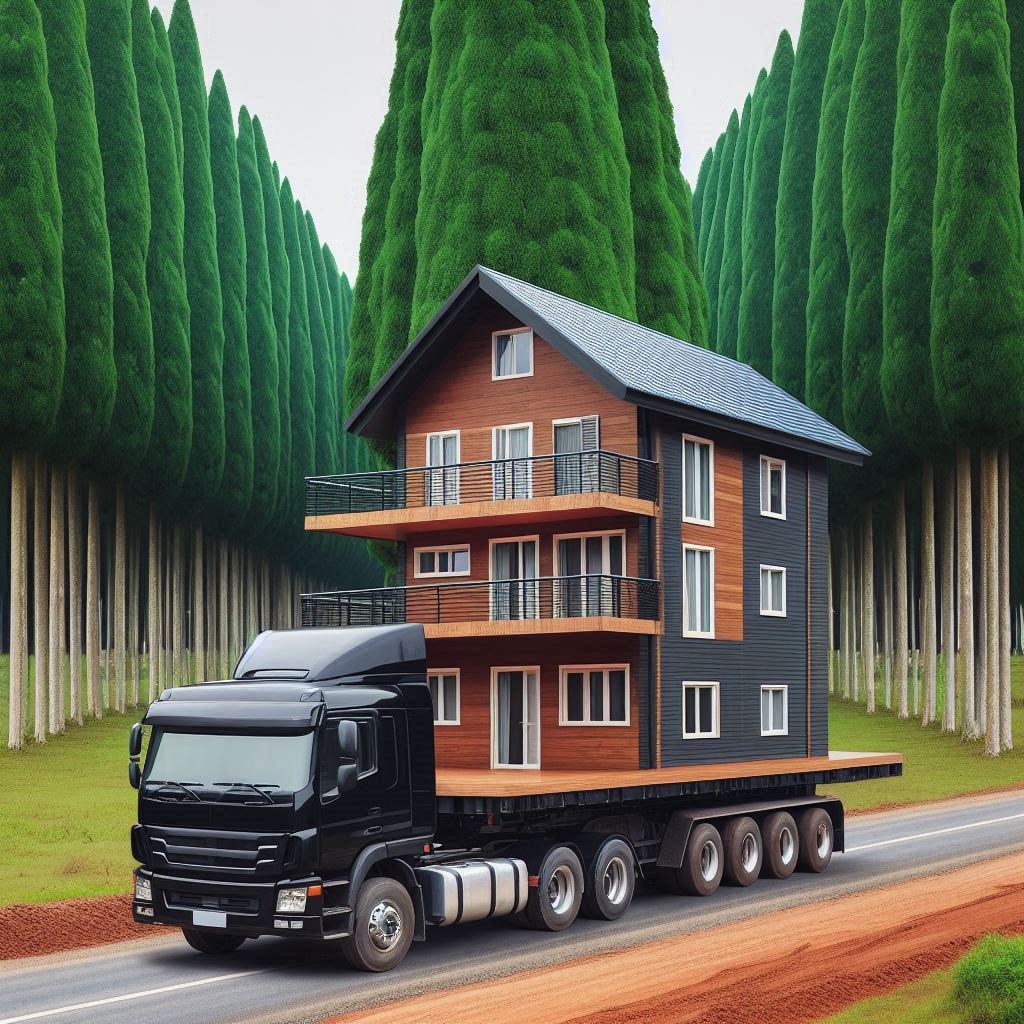
Let’s explore several missteps to avoid when investing in a house shaped camper.
Overlooking Weight Limits
One of the most significant mistakes is neglecting to understand weight limits when towing. Exceeding the towing capacity of your vehicle can lead to dangerous situations on the road.
Always refer to your vehicle’s specifications and your camper’s weight ratings to ensure safe hauling. Invest in a good towing setup, including weight distribution hitches if necessary, to maintain stability and control while traveling.
Failing to adhere to weight limits can compromise safety and result in costly damages, so prioritize this aspect during your camper search.
Neglecting Proper Ventilation
Good ventilation is vital for maintaining air quality inside your camper. Many new owners overlook this aspect, leading to condensation, mildew, and unpleasant odors.
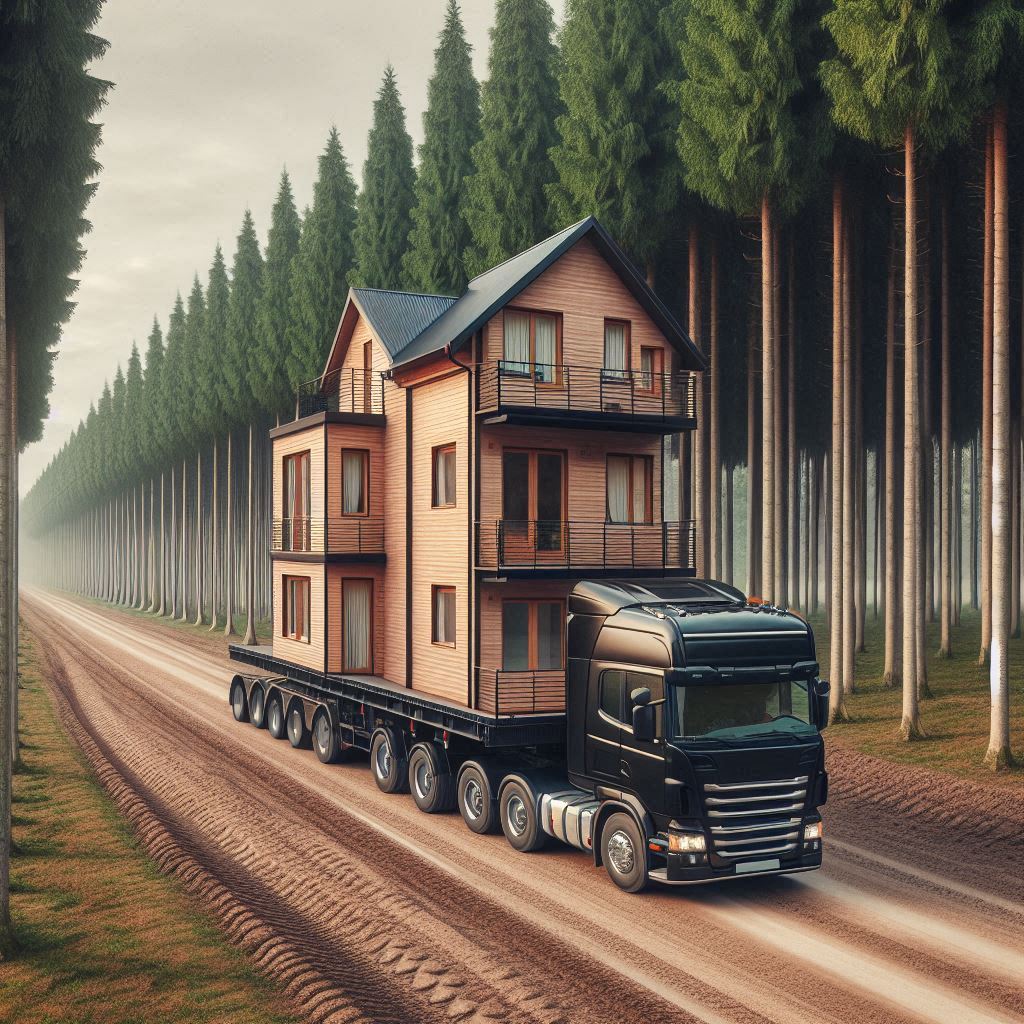
Ensure your camper is equipped with proper ventilation systems such as exhaust fans and windows that open. Regularly checking for any blockages in vents or filters can help improve airflow.
Prioritizing ventilation not only enhances comfort but also prolongs the life of your camper’s interior by preventing moisture-related issues.
Skipping the Research Phase
Rushing into a purchase without conducting thorough research can lead to regret down the road.
Take the time to read reviews, compare models, and visit dealerships to get a hands-on feel for various campers. Engage with fellow campers or online communities to gather insights and recommendations.
Skipping this phase can lead to dissatisfaction with your choice and missed opportunities to find the perfect camper that aligns with your needs and preferences.
Frequently Asked Questions
House shaped campers pique the curiosity of many outdoor enthusiasts, prompting numerous questions regarding their use, safety, and amenities. Below are answers to some frequently asked questions to help clarify concerns.
Can I live full-time in a house shaped camper?
Yes, many people successfully live full-time in house shaped campers, particularly those designed with the necessary amenities for extended living. However, it’s essential to evaluate local regulations concerning living in recreational vehicles and be aware of required permits.
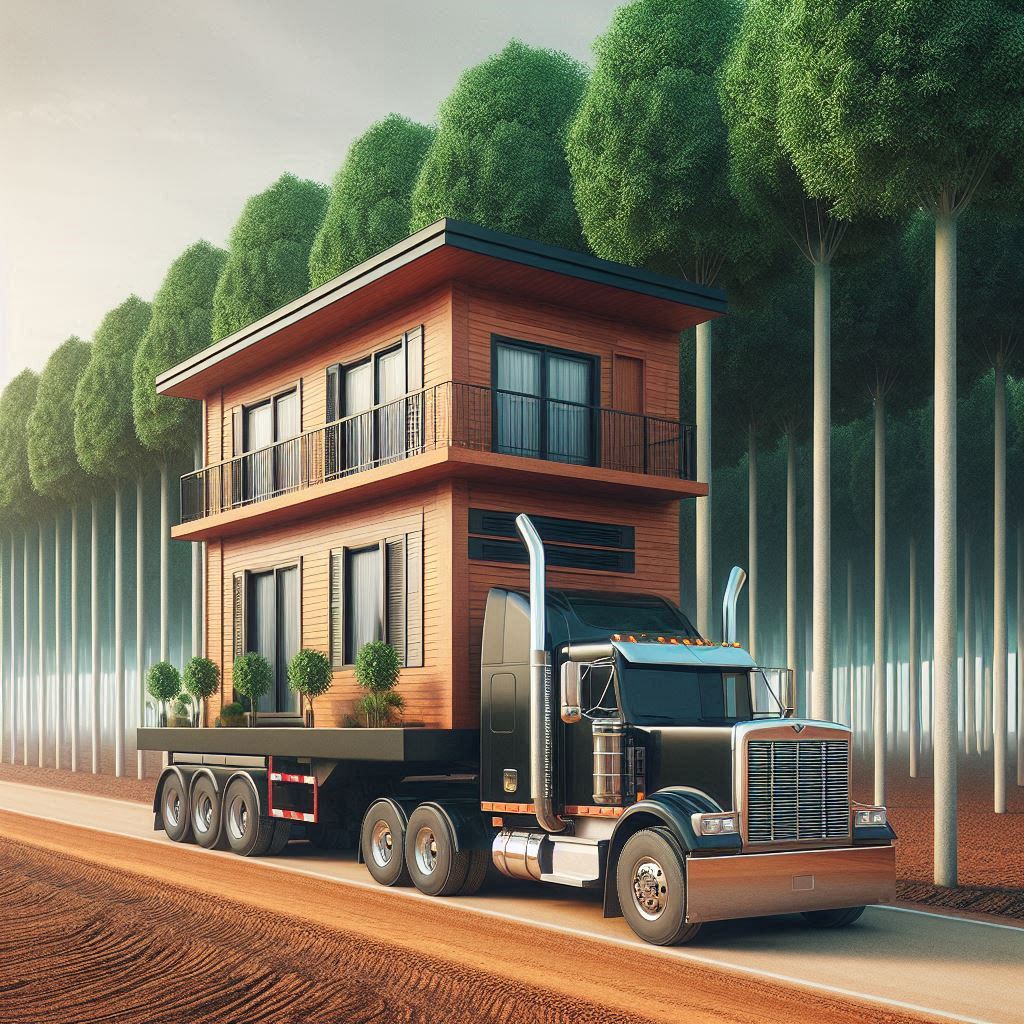
Choosing a model that accommodates your lifestyle is vital, as some campers offer more space and amenities than others. Many full-time campers prioritize functionality, comfort, and efficient use of space to create a cozy living environment.
How do I tow a house shaped camper safely?
Towing a house shaped camper requires understanding your vehicle’s capabilities and implementing safe practices.
First, ensure your vehicle is rated to tow the weight of the camper. Equip your vehicle with proper towing hardware, such as a hitch, brake controller, and sway bars, to enhance stability and control.
Before heading out, practice driving and maneuvering with the camper attached in a safe environment, allowing you to familiarize yourself with the handling dynamics. Additionally, always signal turns and lane changes well in advance, and maintain a safe distance from other vehicles to account for braking distances.
What amenities are typically included in house shaped campers?
House shaped campers often come equipped with a variety of amenities aimed at enhancing the camping experience. While specific features can vary widely by model, common amenities include:

- Fully equipped kitchens with sinks, stoves, and refrigerators
- Bathrooms featuring showers and toilets
- Comfortable sleeping arrangements, often with additional loft spaces
- Heating and cooling systems for year-round comfort
- Storage solutions for camping gear and personal belongings
Luxury models may include added features such as outdoor kitchens, entertainment systems, and high-end finishes, allowing owners to enjoy the comforts of home while immersed in nature.
Conclusion
House shaped campers present a distinctive and enjoyable way to experience the great outdoors, marrying the comforts of home with the freedom of mobile living. With their myriad of benefits—from enhanced comfort and unique design to versatility and eco-friendliness—they appeal to a diverse audience of outdoor enthusiasts seeking new ways to explore nature.
Whether choosing the right model, considering customization options, or ensuring proper maintenance, potential owners have much to contemplate. By making informed choices and avoiding common pitfalls, you can embark on countless adventures, creating lasting memories with family and friends in the enchanting embrace of nature. Embrace the allure of house shaped campers, and let them guide you toward unforgettable journeys in the wilderness.


